What is amsonia and how to grow it?

The original looking amsonia is not yet very widely represented in domestic gardens, but recently it has attracted the attention of more and more people. The main advantages of this culture are unpretentiousness and frost resistance of most species and varieties.
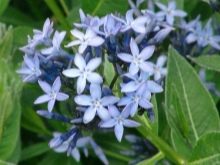
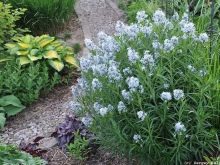
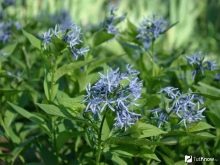
general description
Amsonia, sometimes called the "blue star", is a flowering plant from the Kutrov family. In the wild, it grows in North America, but it is also found in Asia. Deciduous perennial has a powerful root woody over time. The height of the dense dwarf shrub hardly exceeds 50 centimeters. Erect stems are covered with beautiful oblong leaves. Small flowers of the original heavenly color are combined into racemose or corymbose inflorescences. Amsonia, although milky juice is present in its composition, is not dangerous.
Its flowering period is at the end of spring. First, in May, bright green leaves appear on the bush, then blue buds gradually open. By July, the leaf blades are painted in a gray tone, and in September they begin to gilded with a bright yellow color.
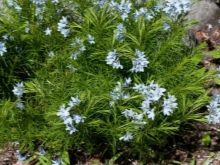
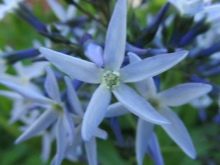
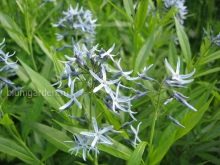
Popular species and varieties
In Russia, the most popular are several varieties of amsonia. Amsonium is more suitable for the regions of the middle zone. Tabernemontana - the most unassuming and cold-resistant. In the southern regions, thermophilic amsonia feels best. Habrichta... Tabernemontana arrived in Russia from the American states Florida and Texas... It is capable of developing both on highly moist soils and on rocky slopes.
Despite the love of the sun, this variety can grow in shade. Beautiful buds are characterized by the presence of blue petals and a bright blue throat-tube. This amsonia can spend the winter just under the snow.
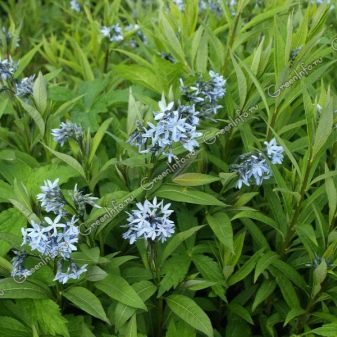
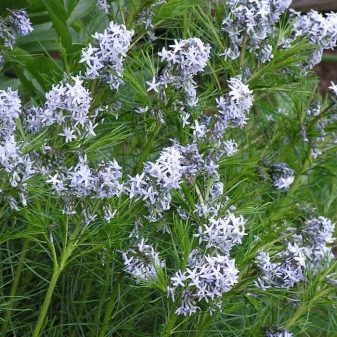
One of the varieties of Tabernemontana is "Blue Ice" - a compact bush 20-40 centimeters high. Its shoots are covered with dark green pointed leaf blades. Blooming "Blue Ice" lasts from May to June and is accompanied by the appearance of monochromatic blue flowers that look like stars and gather in inflorescences.
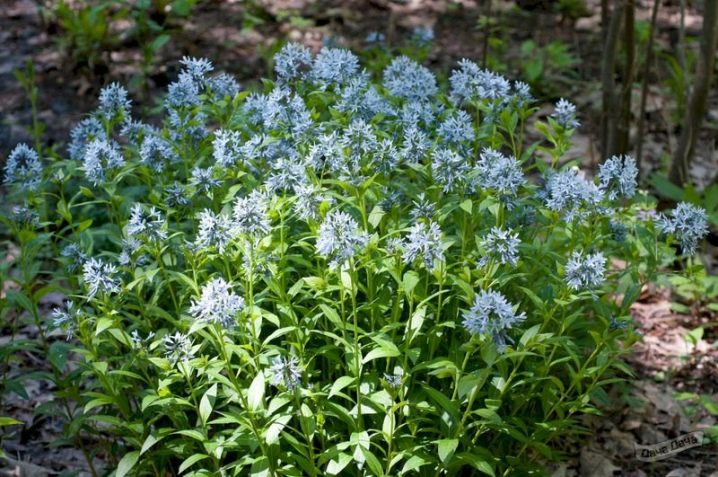
Amsonia Habrichta during flowering, it is covered with pale blue inflorescences. This period lasts from mid or late May and almost until July. The needle-like leaves of a deep green color reach a length of 8 centimeters and grow tightly to each other. This variety has good immunity, and therefore is not afraid of rot and other diseases.

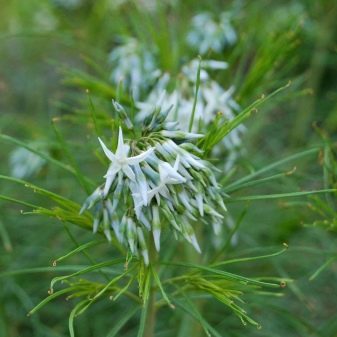
Known among gardeners and amsonia eastern... Being a very demanding flower to the surrounding conditions, in Russia it can only be cultivated in a greenhouse. Amsonia ciliate does not tolerate low winter temperatures. The plant differs from other varieties in more pubescent stems and less abundant flowering. The height of the bush is about 60 centimeters.
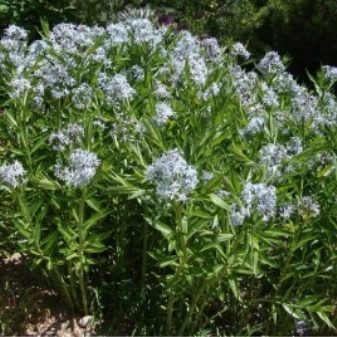
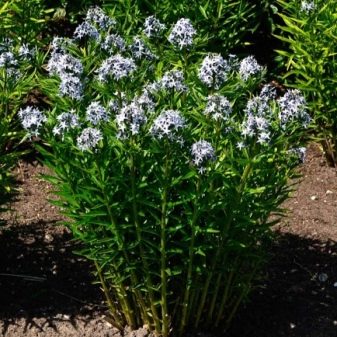
Amsonia willow got its name due to the fact that its leaf blades and elongated stems remind of the resemblance to willow. A bush that reaches a height of 1 meter is characterized by the presence of a strong root. The flowering of this variety does not exceed 1 month in duration.
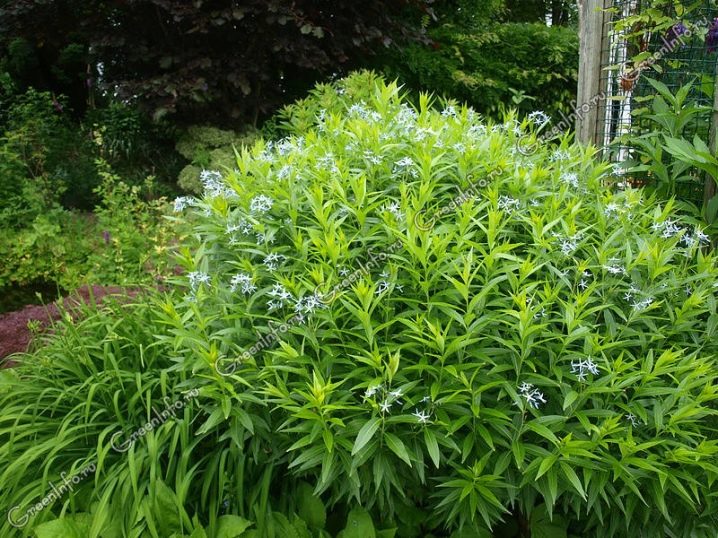
Landing
It is customary to plant amsonia in spring, since specimens planted in autumn may not survive winter even under cover. The flower feels best in full sun, but on the hottest days, the plant still needs shading. The soil of the culture needs well-drained, ideally slightly acidic.
Most of the varieties are capable of developing in slightly alkaline conditions. If the plant is planted on loam, then the soil will need to be enriched with sand. Tabernemontana will be able to develop on the shore of the reservoir, and ciliate and Habrichta will normally accept dry slopes and even rocky gardens.
When disembarking, it is important that 30 free centimeters are kept between individual specimens.
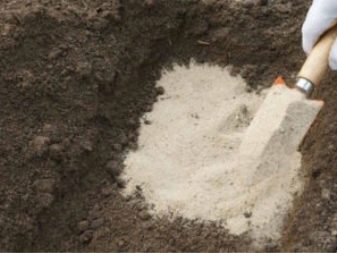
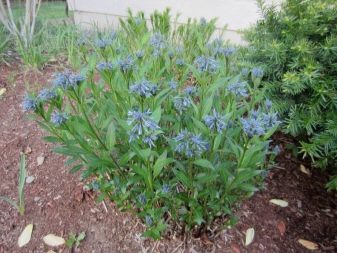
Care
Outdoor care for amsonia is pretty straightforward. After the first wave of flowering, the peduncles break off so that new ones can grow by the fall. Watering should be carried out from spring to autumn regularly, but in moderation, so as not to provoke waterlogging of the soil. It is important that the ground remains moist at all times, but not wet. During dry periods, amsonium is irrigated several times a week. The procedure must be carried out either early in the morning or late in the evening, directing the stream strictly under the bush and not splashing on the leaves. The flower will respond well to the loosening and weeding accompanying watering.
As for fertilizers, it is customary to use them in spring and summer, but in general, only 2-3 times per season. It is recommended to combine organic matter and mineral complexes, adding them one by one. So, during the budding period, peas of complex mineral fertilizer will be useful for the bushes, and in the middle of summer, after the plant has faded, it is recommended to use organic matter.
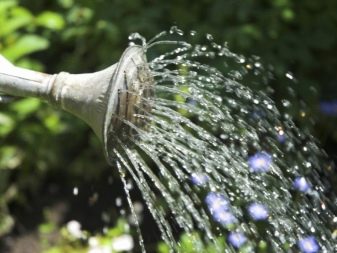
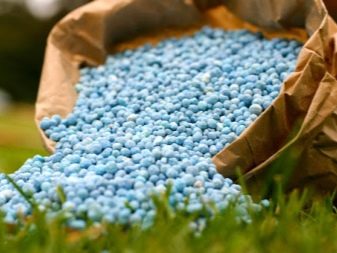
Those varieties of crops that grow in partial shade sometimes need formative pruning. Most varieties for the winter are covered with spruce branches, dry foliage or non-woven material, and are also mulched with a layer of peat or sawdust. You can place a plastic wrap on top. Also, on the eve of cold weather, the stems are shortened to 10 centimeters in order to avoid the development of putrefactive diseases. The shelter is removed in the spring, as soon as the outside temperatures become stable.
It is often not worth replanting the plant, it will be enough once every 10 years.
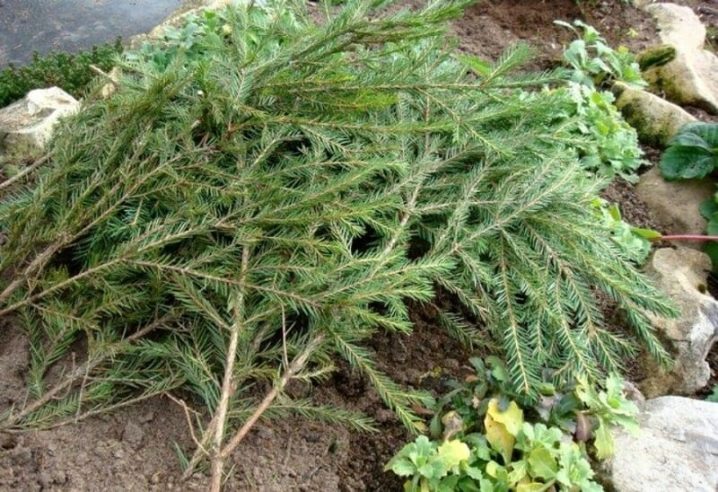
Reproduction
Amsonia propagation is carried out in 3 main ways. Seeds can be obtained by collecting cylindrical fruits that ripen by September, or you can buy them at the store. Purchased planting material must be stratified over a period of 2 months. This is done in a refrigerator or cellar at temperatures from +1 to +5 degrees. Immediately before disembarking, it is also soaked in clean water for a day. It is also possible to germinate seeds at temperatures from +20 to +24 degrees. The sowing itself is carried out either in the fall or in the spring, and before winter, you can sow seeds immediately into the soil, and in the spring you will first need to grow seedlings.
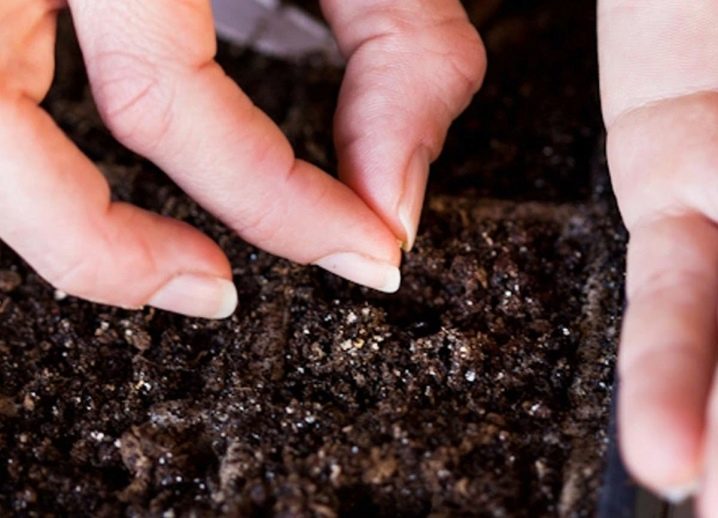
The division of the bush is carried out in late autumn after the foliage has fallen or in early spring. The bush is carefully removed from the loosened soil and is divided into several parts with a disinfected shovel or knife so that 2-3 buds remain on each. In some cases, it has to be sawed. The resulting delenki are immediately planted in their permanent habitat. It is important to ensure that the root collar is above ground level.
The distance between individual specimens is kept equal to 60 centimeters.
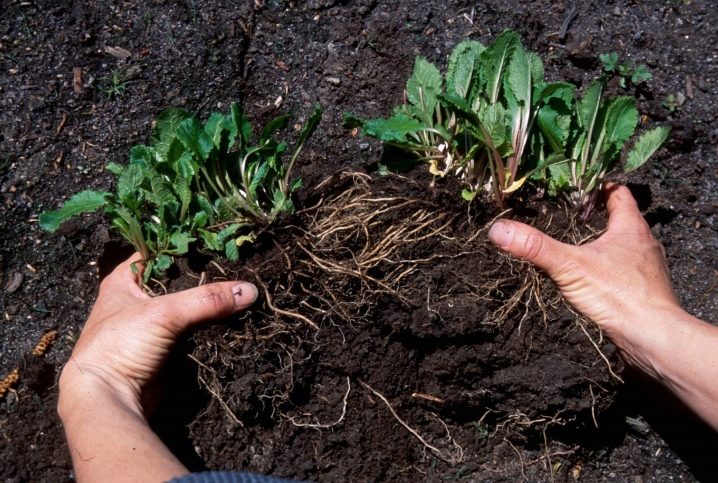
Cuttings are harvested at the beginning of summer, for example, they are cut with a sharp knife from the apical shoots... The sections are necessarily washed to avoid clogging of the vessels. Workpieces with a length of about 10 centimeters are treated with a preparation that stimulates the emergence of roots and placed in containers filled with soil. An option is also possible with rooting the cuttings in warm water, in which activated carbon is dissolved, and under the bag.When, a month later, the roots of amsonia appear, it will need to be moved to a substrate of peat and sand.
Rooting of cuttings lasts about 2 months, after which the plants can be transferred to open ground.
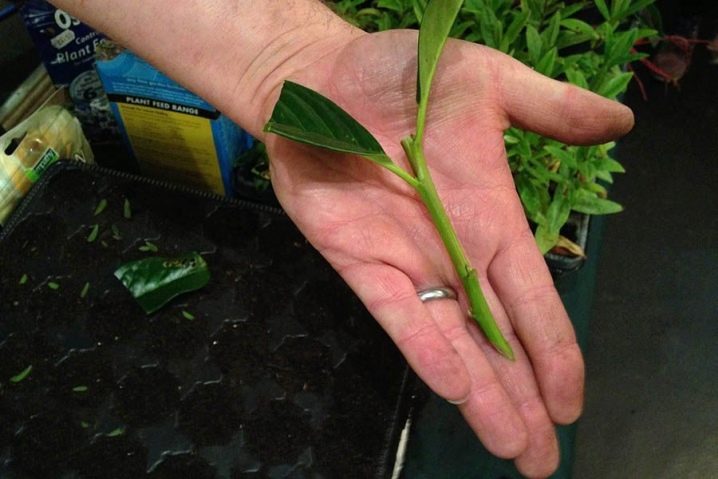
Diseases and pests
Amsonia has good immunity, but if excessively hydrated, it can suffer from root rot. The disease can be determined by the condition of the leaf blades: they fade, dry out and become covered with brown spots. If the flower is already severely affected, then it will have to be destroyed. As a preventive measure, it will be necessary to organize a good drainage layer, as well as periodically arrange watering of the soil. "Fitosporin".
Landings can also be attacked aphids... The insect, settling on the stems and the lower surface of the leaf blades, sucks the juice from the plant. In addition, it is a carrier of more serious infectious diseases. To combat aphids, insecticides such as Tanrek, Lightning or Aktara.
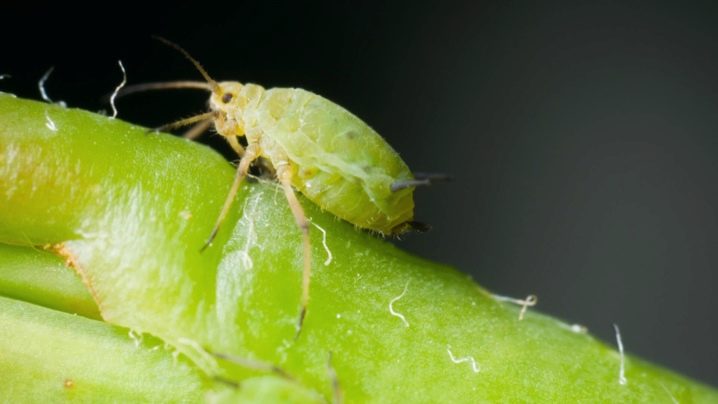
The presence of a spider mite on amsonia, as a rule, is evidenced by a thin cobweb on the leaves and stems. In addition, the leaves become covered with brown spots, the buds and flowers fall off, and the development of the culture itself slows down. As part of the treatment, the damaged leaf blades are first broken off, and all weeds around the plantings are weeded. Further, the bushes are processed Iskra, Kleschevit or Aktellik.
Due to the influence of the scale insect, the stems and leaf blades are covered with dense scales, which are then replaced by brown specks and, finally, die off.
These pests will have to be removed manually, after which the bushes will need to be treated twice with Aktara solution.
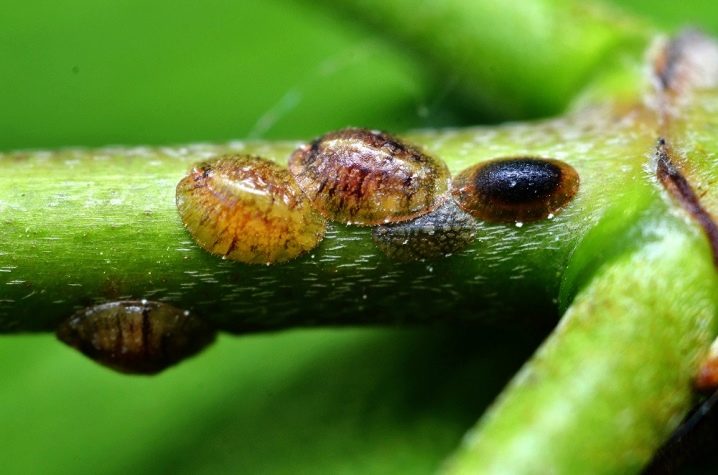
Application in landscape design
Amsonia looks best when dropped off in a group... In principle, it is not forbidden to arrange the bush as a single copy, but then it will still not look so impressive. The flower can be used in flower beds and border plantings. Small varieties are often placed along lawns.
It is customary to combine Amsonia with primroses, incense, soft cuffs and a bathing suit. In rockeries and mixborders, the culture is usually adjacent to tulips and phlox. In the design of an artificial reservoir, amsonia can be combined with fern and sedge.
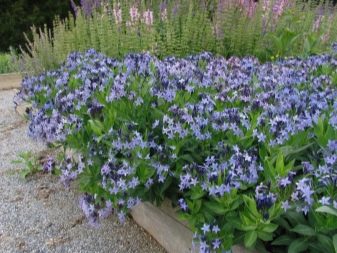
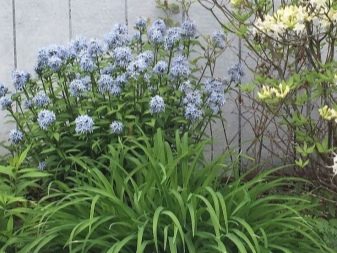
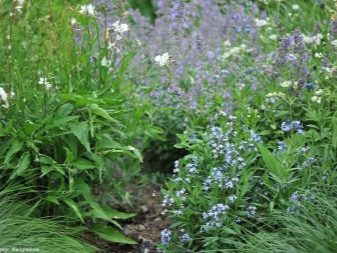
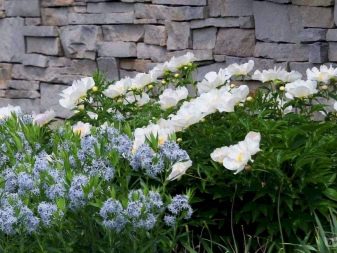













The comment was sent successfully.